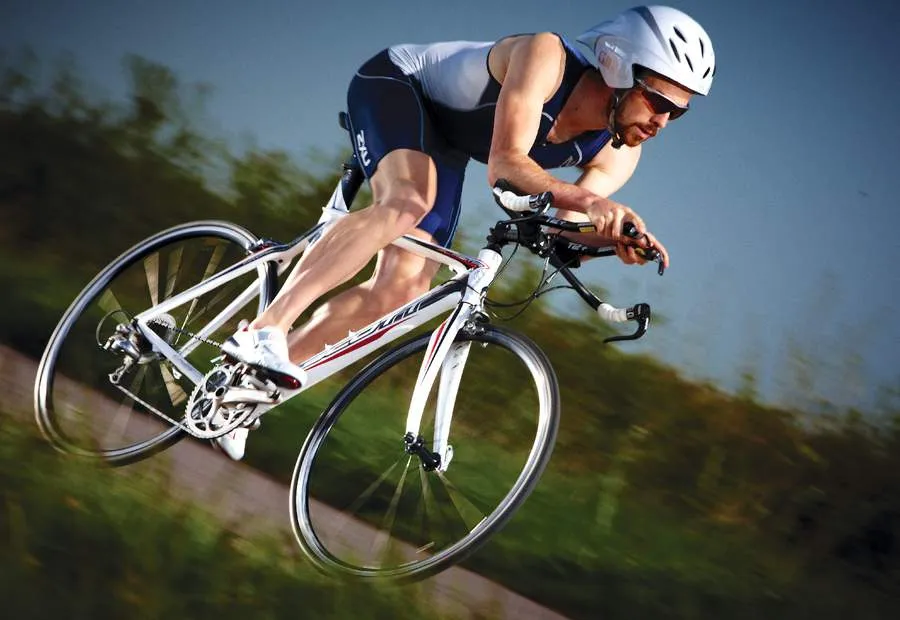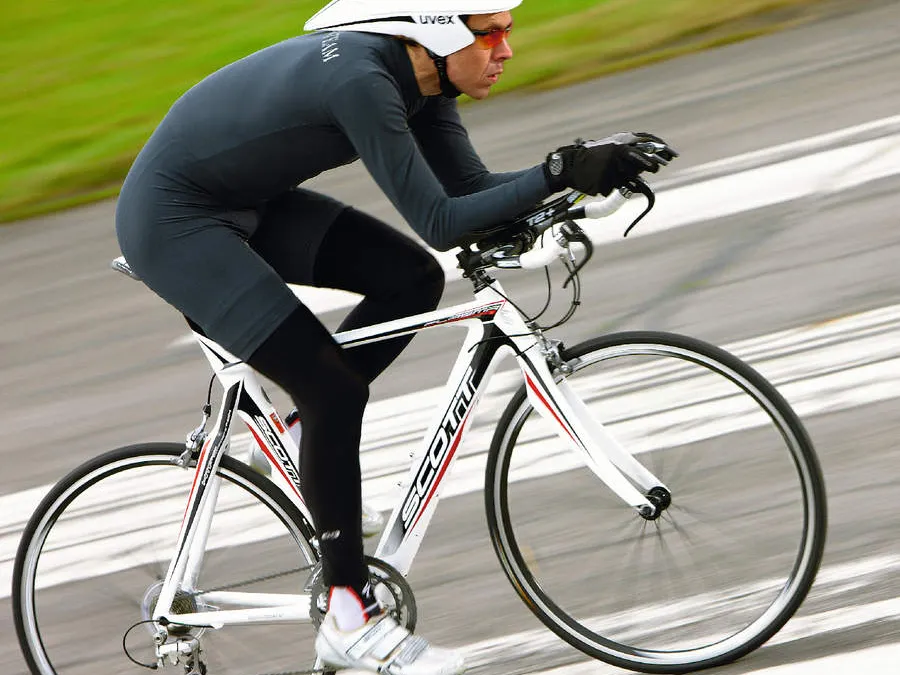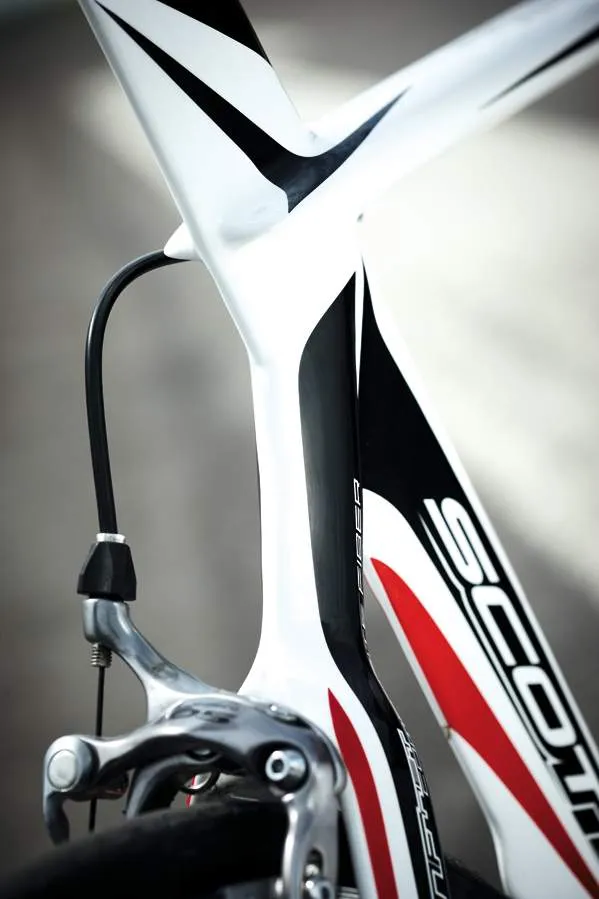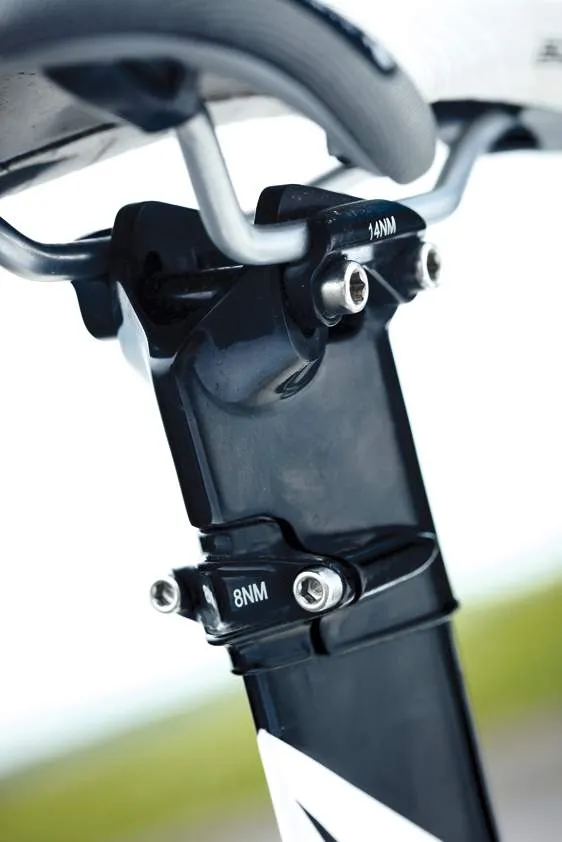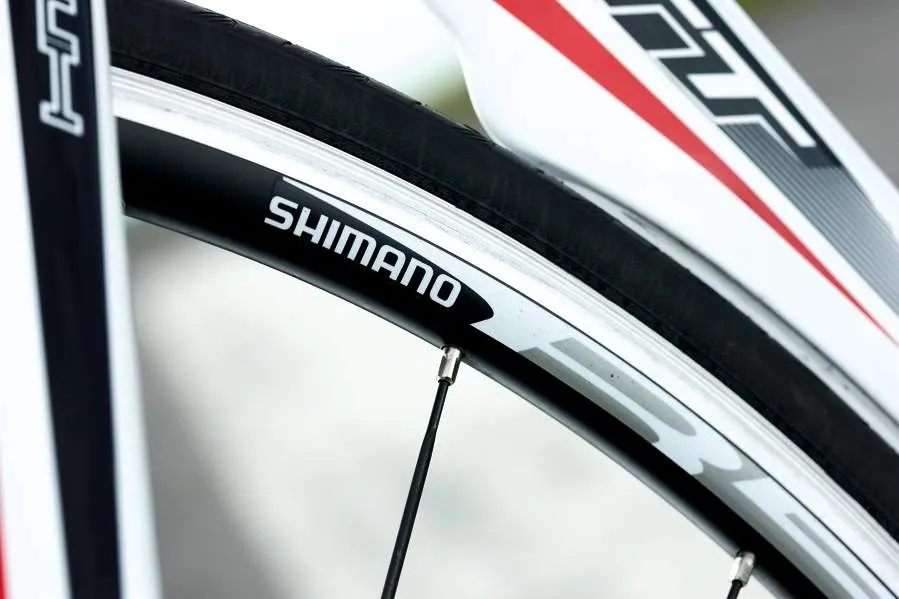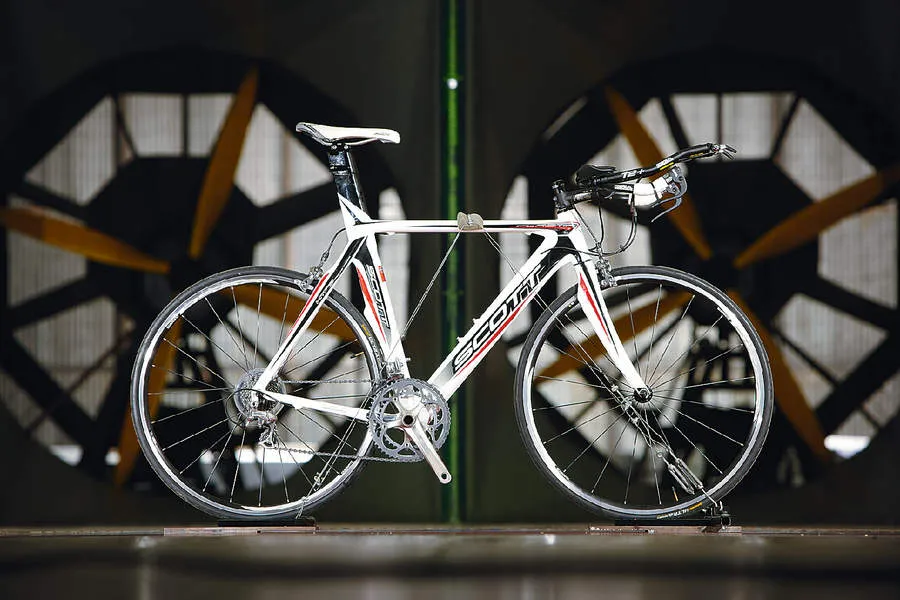While Scott's higher-end Plasma bikes are angular aero beasts, the entry-level Plasma 30 gets a full-carbon frame and fork based on the company’s original CR1 road frame instead.
This gives it a significant weight advantage over most other time trial bikes on the market, and it’s still an impressively sharp and precise speed machine for powerful riders, as long as they don’t mind the occasional rough patch.
Ride & handling: Aggressive and responsive, but can get choppy on rougher roads
Whenever we test Scott bikes there’s a signature accuracy and urgency to them, and the original Plasma is still a particularly precise and exhilarating piece of kit. For a start, despite the hefty wheels, its low overall weight (19.2lb/8.7kg) means it squeezes away from a standstill with easy purpose, and every pedal stroke feels firm and positive as you push it up to working velocity.
Despite the fact it's based on the original CR1, it doesn't share that bike's whip-like characteristics. In other words, when you get out of the saddle and stomp on the pedals, there’s no kick at the end of the pedal stroke. We like that, but appreciate that plenty of Scott owners prefer the kick.
The steering is precise, with fast-reacting geometry highlighting the short and agile wheelbase. This might be a bit too much for some, but it’s a real tonic for riders who like to chuck their bikes around. The ride position is similarly uncompromising, naturally pushing you right over the front into the classic parallel back aero tuck.
Again, the sharp steering and forward bias means a potentially worrying amount of weave if you’re out of the saddle grinding up a climb or hard on the brakes into a corner. If you’re the kind of kid who always sat at the front of the double-decker bus and bags the first row on rollercoasters then you’ll love the sharp-end-of-the-action involvement it offers.
The precise, firm and undiluted handling feel is evident as the speed builds up too. We could take bends on the bar at full stretch that we’d normally back off on, and the bike was perfectly stable, allowing us to get on with the job of maintaining that pace. Line holding is assured and very accurate, and on smoother surfaces the Plasma 30 spools along very efficiently, whether you’re a big gear churner or fast cadence spinner.
When it comes to putting the power down, however, there was a stark divide in opinion between our two main testers. Guy Kesteven reckoned "there’s no hint of power loss when you press on the pedals, whatever gear you’re in". In contrast, Jeff Jones couldn't get on with the bike, saying: "It could have been my legs, but I felt slow climbing on the hoods and slow on the flats or small rises on the extensions. Knees hitting top tube? Or just the engine? In any case, it was a surprisingly disappointing ride."
The over-the-bar extensions and relatively tall head tube do leave it high at the front end unless you fit a drooped stem. That’s only going to be an issue for experienced riders who can cope with a properly deep tuck though. Otherwise, this is obviously a bike that likes to be ridden hard and fast, and its responsiveness when you do creates an inspiring upward spiral of increased enthusiasm and decreased bike split times.
Where all this precision and tight feel can literally come back and bite you on the bum is on rougher back roads. Here, the clarity from either end rapidly turns to chatter, which cuts into traction and cadence as the back end of the bike bounces and skips about. It’s not great for comfort levels either, although the carbon does a decent job of isolating a lot of the surface sting before it gets to your saddle and shoulders.
Its heightened reaction (through handling and general hammer) to any rough patches or small potholes means you need to take more care when you’re snacking out of your back pocket. Heavy wheels mean it’s also dulled in response when you hit the hills, with the forward position making it feel cramped on the climbs. Overall low weight keeps it going up okay though, and it drops very fast and accurately too, as long as you don’t find the forward weight bias and ‘blink and it’s done it’ handling too nerve-wracking to let rip.
Aerodynamics: Does well on its own but less so with a rider on board
We were lucky to have the chance to test the Plasma in the MIRA wind tunnel just outside Birmingham. On its own, the Scott had a CdA (coefficient of drag x frontal area) of 0.103 at 0° of yaw, 0.107 at -5° and 0.114 at -10°. Somewhat surprisingly, putting a rider on board resulted in a CdA of 0.243. This appeared to be because we just couldn’t get low enough, which not only increased our frontal area, it also made the air separation off our back a little messy.
Frame & equipment: Extremely light and stiff carbon chassis; underwhelming spec
The Plasma was pretty radical when it first appeared and it’s aged well. For a start, the frame and fork are both very light. While the relatively tall conventional head tube doesn’t do it any aero favours, it does keep the front end and aero fork very stiff in steering terms. The teardrop down tube and flat (but very broad) top tube do the same through the mainframe too, with the teardrop seat tube penetrating through at the rear end.
The Plasma also gets a seatmast and saddle cap design to save weight, although that does mean very careful measuring and cutting before you mount the seat clamp – and a relaxed attitude to resale potential – are essential. Fortunately, the clamp allows for a bit of adjustment – just don’t cut the mast too short. Twin bottle cage mounts mean you won’t go thirsty and open brake cable routing is simple to work on.
All the money spent on the frame means the Plasma's spec is a level below the kit found on some other bikes at this price. It’s mostly Shimano: Dura-Ace shifters, Ultegra rear derailleur and 105 front, 105 brake callipers, 5600 chain and cassette, and the crankset is Truvativ Elita. It’s all perfectly reasonable kit and we’d happily race on it, but we’d feel a little shortchanged if we’d just paid £2,000 for it.
Shimano also provide the sturdy but slightly sluggish R500 wheelset, which is the obvious first upgrade candidate – especially if you ride hills a lot. There’s nothing wrong with the wheels per se – they handle well and seem quite robust and stiff, as we’d expect – but they’re not up to the racier standard that the rest of the bike sets. Tyres are Continental Ultra Sports – good all-round rubber suitable for both racing and training.
The cockpit is more in line with what we’d expect: a Profile O-Zero base bar with T2+ Aerobar ‘s-bend’ extensions and QS 2 brake levers. The bolt-on extensions allow for both length and angle adjustment, independent elbow pad and extension width, and even elbow pad height. The cockpit does add height to the already slightly tall front end, though.
The Scott Plasma saddle is designed with the male anatomy in mind and has a soft nose. We found it quite comfortable with just the right amount of give, although the usual caveat that taste in saddles is a very personal thing applies. You can reconfigure the Ritchey saddle clamp on the seat tube cap to give slightly steeper or slacker positions from the base seat angle.
